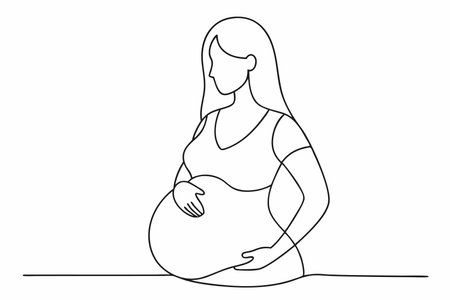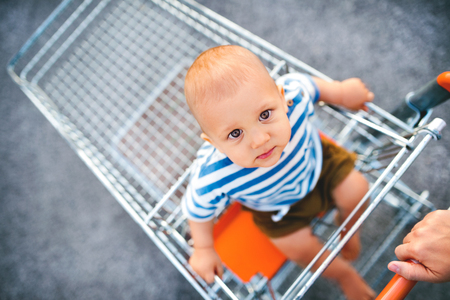1. Getting Started: Knowing When to Begin Babyproofing
If you’re a parent in the U.S., knowing exactly when to start babyproofing your home can feel a bit overwhelming. The truth is, there’s no one-size-fits-all answer, but understanding some typical developmental milestones will help you stay ahead of the game. Most American families find that around 6 months—when babies start rolling, scooting, or showing interest in crawling—is the right time to get serious about safety. At this stage, your little one’s curiosity takes off fast, and everyday household items suddenly become potential hazards.
Why does early action matter? In many American homes, open floor plans, easy-access kitchens, and staircase layouts mean there are plenty of opportunities for accidents once your baby gets moving. By starting before your child is fully mobile, you can spot and address risks before they turn into real dangers. Remember: waiting until your baby is on the move often means you’re already behind. Staying proactive not only keeps your child safe but also gives you peace of mind as a parent.
2. Room-by-Room Guide: What to Babyproof First
If youre wondering where to even start with babyproofing, dont worry—Ive been there. The trick is to focus on the rooms your baby will spend the most time in and take it step by step. Here’s my dad-tested, real-life guide to making each space safer as your little one grows more curious and mobile.
Living Room
This is often the family hangout zone—and a minefield for crawlers and toddlers. Prioritize these:
| Item/Area | Why It Matters | What to Do |
|---|---|---|
| Coffee tables & sharp corners | Babies are at head-height when crawling or learning to walk | Add corner guards or edge bumpers |
| TV & furniture | Can tip if pulled on | Anchor TVs and large furniture to the wall |
| Cords & outlets | Choking and shock hazards | Use outlet covers and cord shorteners or concealers |
| Small objects (coins, batteries, etc.) | Choking hazard | Regularly sweep room and keep small items out of reach |
Kitchen
The kitchen is full of temptations—bright buttons, drawers, and smells—but also dangers. Here’s what matters most:
| Item/Area | Why It Matters | What to Do |
|---|---|---|
| Cabinets & drawers | Chemicals, sharp tools inside | Add child-proof latches or locks (especially under sink) |
| Oven & stove knobs | Burn risk, gas leaks possible if turned on accidentally | Add knob covers or remove knobs when not in use; use back burners first |
| Trash can | Bacteria, choking hazards, sharp edges inside | Use a can with a locking lid or keep it behind a locked cabinet door |
| Tablecloths & hanging items | Tugging can pull hot food or heavy objects down onto baby | Avoid tablecloths and keep cords/towels out of reach |
Bathroom
This is one place you’ll want to keep off-limits unless you’re right there. But in case your little Houdini sneaks in:
- Toilet lid lock: Prevents drowning accidents.
- Cabinet latches: Keep cleaning products and razors locked up tight.
- No-slip mats: For both tub and floor to prevent slips.
- Always empty tubs/buckets immediately after use.
- Dads’ tip: Keep bathroom doors closed with a simple doorknob cover.
Nursery / Bedroom
This should be the safest room in the house. Here’s how I did it for our little one:
- Crib setup: No pillows, blankets, bumpers, or stuffed animals for infants—just a fitted sheet.
- Cordless blinds: Or use cord wind-ups to prevent strangulation risks.
- Dresser anchors: Babies love climbing—secure everything tall to the wall.
- Bassinet placement: Away from windows, cords, lamps, or anything that could fall in.
- Nail down rugs: Use rug tape so they don’t slip while your little one practices standing up.
Laundry Room & Other Spaces Worth Checking
- Laundry pods: Keep high up or locked away—they look like candy.
- Shoe racks: Store shoes (and all the germs they bring) out of reach.
- Mudroom/pet bowls: Babies love exploring here too; block access if possible.
- Dads’ hack: Walk through each room at baby-eye level—you’ll spot dangers you never noticed before!
The Bottom Line: Prioritize Where Your Baby Plays Most First
You don’t have to babyproof everything overnight. Start with rooms your baby spends the most time in—usually living room, nursery, and kitchen—and build from there. As your child becomes more mobile, update your checklist. You’ll be surprised how quickly “that’s safe” turns into “how did you even get up there?!” Stay flexible, stay alert—and remember: every home (and every kid) is different!

3. Must-Have Babyproofing Products and DIY Hacks
When it comes to babyproofing, there’s no shortage of gadgets and clever hacks that American parents swear by. The right products—and knowing when to use them—can make all the difference as your baby starts exploring. Here’s a rundown of must-haves and some smart DIY ideas you’ll see in homes across the U.S.
Essential Babyproofing Gadgets
Outlet Covers
As soon as your baby starts crawling (usually around 6-8 months), outlet covers become non-negotiable. Babies are naturally curious and those little holes are just their size! Go for sliding or self-closing covers—they’re harder for tiny fingers to pry off than the basic plastic plugs.
Cabinet and Drawer Locks
Once your little one can pull up or cruise, cabinets become prime targets. Magnetic locks are popular because they stay hidden and require an adult-strength magnet to open, but simple latch-style locks work too. Prioritize cabinets with cleaning supplies, sharp objects, or anything breakable.
Safety Gates
If you have stairs or want to block off certain rooms, pressure-mounted or hardware-mounted safety gates are essential. Install them at both the top and bottom of stairways as soon as your child is mobile. Look for models certified by the Juvenile Products Manufacturers Association (JPMA) for added peace of mind.
Cord Shorteners and Blind Cord Wraps
Dangling cords from blinds or electronics pose a serious strangulation risk. As soon as your child is pulling up, use cord wraps or tension devices to keep cords well out of reach.
Corner Guards and Edge Bumpers
Coffee tables and fireplace hearths suddenly become hazardous when babies start cruising furniture. Soft corner protectors and edge bumpers can help prevent bumps and bruises during this stage.
DIY Hacks That Work
Pool Noodles for Door Stops
A cut-up pool noodle over the edge of doors keeps little fingers safe from accidental slams—a cheap and cheerful solution that works in any room.
Rubber Bands on Cabinet Knobs
If you’re in a pinch, a thick rubber band wrapped tightly around cabinet knobs can temporarily keep curious hands out (just remember it’s not a long-term fix).
Tennis Balls on Sharp Corners
Slice a tennis ball and fit it over sharp table corners or bedposts until you get proper corner guards—a classic parent hack that gets the job done.
When to Update Your Babyproofing Setup
Keep in mind: what worked last month might not be enough now. As your child masters new skills—like climbing, opening doors, or reaching higher shelves—it’s time to reassess your setup. Staying one step ahead is key to keeping your growing explorer safe.
4. How to Keep Up as Your Baby Gets More Mobile
Once your baby starts moving, everything changes—fast. As a dad who’s been through this, I can tell you that just when you think you’ve covered every hazard, your little one will find a new way to surprise you. Here’s how to spot new dangers at each stage and adapt your home without going crazy.
Crawling Stage: Eyes at Their Level
When your baby starts crawling, get down on all fours and see the world from their perspective. Suddenly, electrical outlets, low cabinets, and cords are right in their line of sight. Pro tip: use outlet covers and keep small objects off the floor. Move cleaning supplies and medicines up high or lock them away. Babies love exploring under furniture, so check for choking hazards or sharp edges.
Common Hazards When Crawling
| Hazard | Quick Fix |
|---|---|
| Electrical outlets | Install outlet covers |
| Cords (blinds, chargers) | Tuck away or use cord holders |
| Low cabinets | Add childproof locks |
| Small objects on floor | Sweep/vacuum regularly |
| Sharp corners on furniture | Apply corner guards or bumpers |
Cruising Stage: Pulling Up and Standing Danger Zones
Cruising means pulling up on furniture and taking steps while holding on. Now, bookshelves and coffee tables become climbing gyms. Anchor heavy furniture to the wall—this is non-negotiable in the U.S., where furniture tip-overs are a real concern. Keep breakables and hot drinks out of reach, and watch for tablecloths that can be pulled down.
Cruising Hazards Checklist
- Secure bookshelves and TVs to the wall with safety straps.
- Move decorative items higher up.
- Tape down area rugs or remove them to prevent slips.
- Add foam padding around fireplace hearths and hard edges.
- Double-check window locks and screens.
Walking Stage: The Whole House is Their Playground
When your baby starts walking, gates become essential—especially for stairs and rooms with lots of hazards (like bathrooms or kitchens). Door knob covers help keep curious hands out of off-limit areas. Consider fridge locks too; toddlers love opening doors! It’s also time to teach basic rules (“No touching the stove!”), but don’t rely on them alone yet.
Pro Dad Tips for Fast Adapting Without Stressing Out
- Do regular “hazard sweeps”: Every few weeks, scan the house for new risks as your child’s skills change.
- Create “yes” zones: Set up safe play areas where your baby can explore freely, so you’re not saying “no” all day long.
- Keep emergency numbers handy: Post poison control and pediatrician contacts on the fridge—just in case.
- Pace yourself: You don’t need a Pinterest-perfect setup overnight. Focus first on major hazards, then fine-tune as you go.
The key is staying one step ahead while remembering that no setup is perfect—supervision is always your best tool. With each milestone, do a quick update so your home grows right along with your little adventurer!
5. When and How to Update Babyproofing Solutions
As your little one grows, your babyproofing setup needs to evolve right along with them. Babies are quick learners, and what worked for a crawling infant might not be enough for a curious toddler who’s suddenly climbing everything in sight. So, how do you know when it’s time for an update, and how can you make these changes without turning your whole house upside down?
Watch for New Milestones
The biggest clue is your child’s development. Is your baby starting to pull up on furniture? Time to secure bookshelves and TV stands. Are they reaching countertops or opening doors? Cabinet locks and door knob covers are your new best friends. Every new skill means potential new hazards, so stay a step ahead by observing what your child can now reach, grab, or open.
Regular Safety Check-Ins
Set a reminder to do a quick safety sweep every month or after any major developmental leap (like walking). Look out for forgotten outlets, loose gate fixtures, or newly accessible cords. Walk through each room at your child’s eye level—it’s amazing what you’ll spot from their perspective!
Babyproofing That Fits Your Routine
Updating babyproofing doesn’t need to be overwhelming or expensive. Keep extra outlet covers, cabinet latches, and corner guards on hand so you can add protection as needed. If you’re short on time (and what parent isn’t?), tackle one room at a time or focus on the areas where your child spends the most time. Don’t hesitate to ask friends or family for help—another set of eyes can catch things you might miss.
Remember: babyproofing is an ongoing process that should flex with your family’s needs. By staying proactive and making small updates as your child grows, you’ll keep everyone safer—and give yourself some well-deserved peace of mind.
6. Family and Community: Getting Everyone on Board
Babyproofing isn’t just a solo job for parents—it’s something that involves the whole family and even your community. As your baby grows and starts exploring new environments, it becomes more important to make sure everyone who spends time with your child understands the safety measures in place. Here are some practical tips on how to talk to grandparents, siblings, babysitters, and playdate hosts about keeping your baby safe both at home and when you’re out and about.
Communicating with Grandparents
Grandparents love spoiling their grandkids, but sometimes they aren’t up-to-date with modern babyproofing standards. When visiting their home or having them babysit, take a walk-through together and point out key safety updates—like outlet covers, secured furniture, or keeping small objects out of reach. Explain why certain precautions are necessary now (for example, reminding them how quickly babies can crawl or pull up). It helps to frame these conversations positively by emphasizing how much you appreciate their help and want everyone to have peace of mind while spending time together.
Getting Siblings Involved
If you have older children, make them part of the safety team. Show them why certain things need to be put away (think Legos or art supplies) and teach them simple rules like always closing the baby gate or picking up toys after playing. Praise them when they remember to follow the safety routines—kids love feeling responsible and helpful! This not only keeps your baby safe but also strengthens the bond between siblings.
Talking with Babysitters
Every babysitter should get a quick “babyproofing tour” before you leave them in charge. Walk through each room and highlight hazards as well as safe zones for play. Be clear about rules like locking doors, never leaving the baby unattended on high surfaces, and how to secure cabinets or drawers. Leave emergency contacts in an easy-to-find spot and encourage questions so your sitter feels confident handling unexpected situations.
Playdates and Going Out
When your baby is invited for playdates or visits another home, don’t hesitate to talk openly with other parents about your baby’s needs. Politely ask if certain areas are safe for crawlers or walkers, and offer to bring portable gates or outlet covers if needed. Many parents appreciate the heads-up—after all, keeping all kids safe is a shared goal. If you’re hosting, let guests know about any house rules (like shoes off near play mats) that help maintain a secure environment.
Setting Expectations Without Stress
No one likes being told what to do in their own space, so approach these conversations with empathy and gratitude. Focus on teamwork: “We’re all learning as we go,” or “Thanks for helping us keep our little one safe.” The more open and respectful your communication, the easier it will be to keep everyone on board with updating safety measures as your baby grows.


